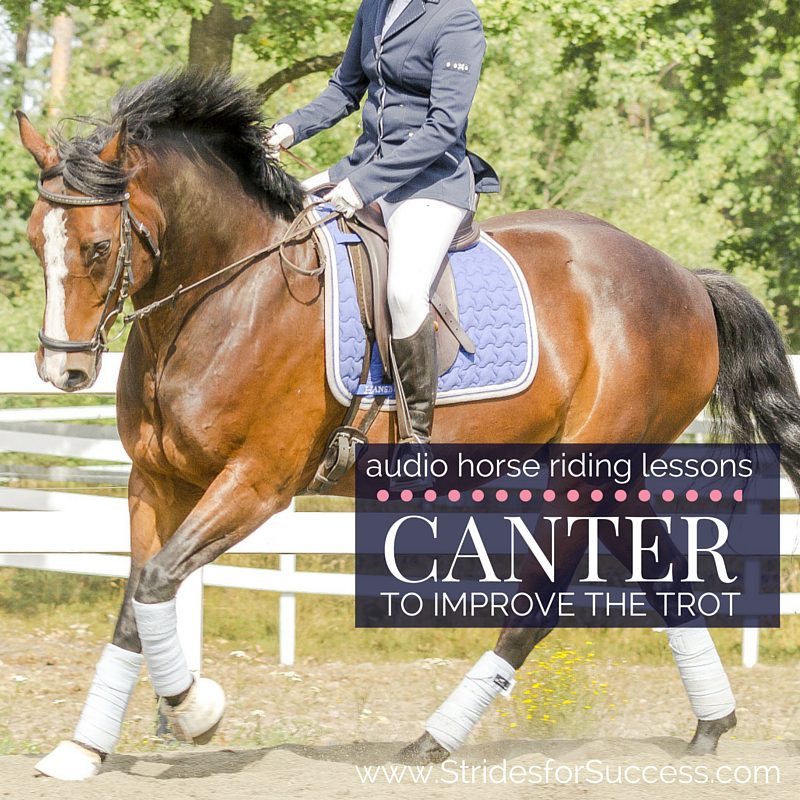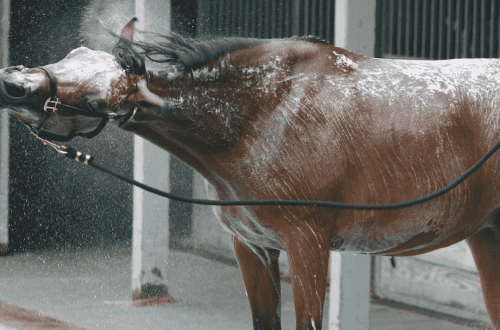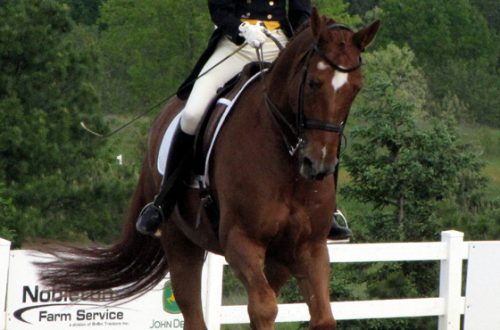
Using the canter to improve the quality of the trot
Using the canter to improve the quality of the trot
Perhaps you have noticed that there are horses with only two “gears” at the trot: a good, active forward trot and a soft, sluggish trot? At the same time, it is quite difficult to go from the second to the first? To help you improve your trot can … gallop!
It may sound strange, but a good canter can often really be the easiest catalyst to change a mediocre sluggish trot. I note that, as in everything we do, the canter must be of good quality. The transitions from both canter to trot and trot to canter will determine how effective this technique will be in training your horse.
Before we go any further, let’s recap what makes a good lynx. Catching the rhythm of a trot is quite simple: 1 .. 2 .. 1 .. 2 .. , we adjust every step of the trot. The problem for many riders is the ability to control the pace of this rhythm.
If rhythm is 1 .. 2 .. 1 .. 2, then tempo is how often rhythm 1 .. 2 .. “sounds” in any given period of time or distance. For example, let’s take the long wall of a 60-meter arena. By adjusting the pace of the trot rhythm, you can either do a lot of “fast” 12121212, or get less than 1…… 2…… 1…… 2….. but “slow”. The distance will not change.
When the rider starts to trot, establishing rhythm and pace is usually a problem. But once it comes to adjusting the trot, something (usually pace) can quickly become unsteady. Corrections may look like half halts, shortening or widening of steps, ascending or descending transitions within or between gaits.
In fact, even simple attempts to start activating and engaging the hindquarters and getting the horse into contact often result in a loss of rhythm and tempo. Many horses will either start to trot or become heavy on the reins and lean on the rider’s hands.
When working on trot-canter transitions, riders may want to ride in a training trot, but I strongly recommend using the training trot only at the time of the actual transition. Lighten up by working at the trot. The reason I say this is because in order to improve the quality of the trot, the horse must first engage his hindquarters. From my experience, when working on transitions between trot and canter, riders start to tire quickly. This causes them to begin to ‘slouch’, which in turn causes them to ‘shut off’ the energy flow needed for the horse to actually perform at a quality trot. It is pTherefore, I suggest that you work on this exercise at the posting trot – it will be easier for you and the horse.
Start by asking the horse to work at a working trot that you feel is active, about which you can tell the horse is moving forward. Focus on rhythm and then tempo, especially when you’re driving through corners or changing direction. Can your horse stay at a steady pace and rhythm while working in both directions?
Many riders wonder if the trot is really a “working trot”. The next part of the exercise will quickly show you if your trot is working or sluggish!
Start preparing your horse for the canter. Use half halts, but pay close attention to rhythm and tempo all the time. It is also important to know how straight the horse remains during the transition. Does her butt move behind her shoulders or move to the side? Does it wrap around your inner leg? Or maybe it bends in the opposite direction? If you notice any of the above, take it as a signal that you need to work on the appropriate basic horse skills before you canter.
You may also find that maintaining the rhythm, and in particular the tempo, during the transition is difficult. And that’s what you should be focusing on.
As you canter, check to see if the horse is moving forward. One of the reasons we can use the canter to improve our trot is that the canter is often characterized by more energy and forward movement. If you have to push and push your horse at every pace, it’s not a canter. But it’s important to note that if you let your horse run around the arena like at a race, that too has little to do with cantering.
A gallop can be classified as “forward movement” if the energy helps you to move to the desired point that you yourself have chosen. You can control where the horse is moving and how it is moving at any time.
Once you really create a real forward canter, you can start thinking about transitioning back into a trot. Again, maintaining rhythm and tempo is vital. It is also important that you allow his horse to trot.
There is only a second you will feel when your horse actually takes that step that takes him from canter to trot. In order to do this, it must “land” into a trot, and you must “release” or “soften” with your hand so that it can actually trot.
Here I also suggest that you take it easy from the very first steps. So when you allow the horse to keep moving forward, the energy from his hindquarters can really flow to his forehand. There will be a feeling that it “swings” under you.
Many riders find that the first time they ride a really a good trot, they are very strongly discouraged from the saddle. The posting trot will also help you here. Later, as you become more flexible and allow the energy to flow through your body, you will be able to move with your horse while sitting in a training trot.
You can use the canter to improve your trot, both in the saddle and on the ground. The same principles can be applied when working with a horse in hand. In doing so, you will actually see the results, not feel them.
Remember that in order for your horse to improve and develop, you must be responsible for establishing and maintaining straightness, rhythm and pace. Work on being able to shift “speeds” both up and down without losing any of the above characteristics. It is also important that your horse constantly keep moving forward; where you point her.
Lorna Leeson (source); translation Valeria Smirnova.





